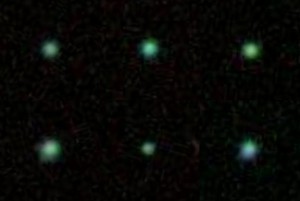When we look at objects in the night sky, it’s easy to imagine that each object has a unique position in the sky. But many times objects can overlap. Most commonly this occurs in occultations, where a planet or asteroid passes in front of a star or other planet. These transitory events allow us to study things like the atmospheres of planets, or help us discover binary stars. It’s also possible for galaxies to overlap, such as the image of NGC 3314 above.While it looks like a colliding galaxy, NGC 3314 happens to be two galaxies separated by about 20 million light years. NGC 3314a is the bluish foreground galaxy, while NGC 3314b is the brighter background one. You can distinguish them in the image because the dusty spirals of NGC 3314a clearly block some the light from NGC 3314b. It’s unusual to see overlapping galaxies so clearly, and it gives us an opportunity to study the dusty material of a spiral galaxy.
NGC 3314 is also a good example of why we must be careful not to assume that two objects are in the same place in the universe when they happen to appear in the same place in the sky. Halton Arp, for example, observed many cases where distant quasars were overlapped by closer galaxies. By assuming the quasars were in the same place as the galaxies, he concluded that the high redshift of galaxies couldn’t be due to cosmic expansion. His idea turned out to be wrong.
It’s important to keep in mind that our view of the cosmos can have an obstructed view.











